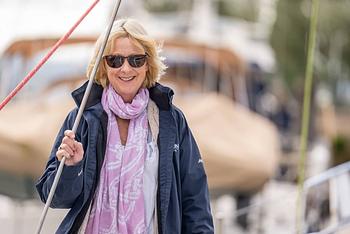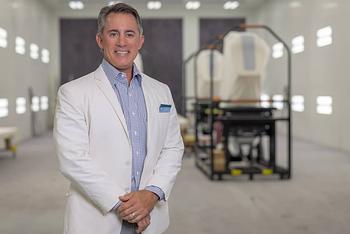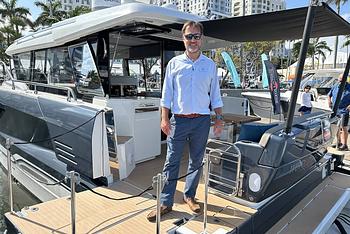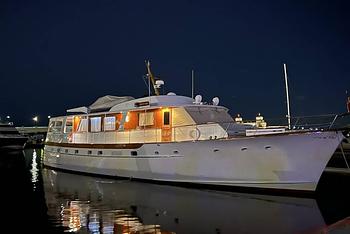From commercial fishing to custom homebuilding and long-range cruisers, Jeff Druek learned how to build a lasting product to suit the customer. A lifelong boater, Druek launched Outer Reef Yachts to build customized cruising yachts when he couldn’t find one designed the way he wanted it. He spoke with Rightboat.com content director John Burnham recently from his office in Fort Lauderdale.
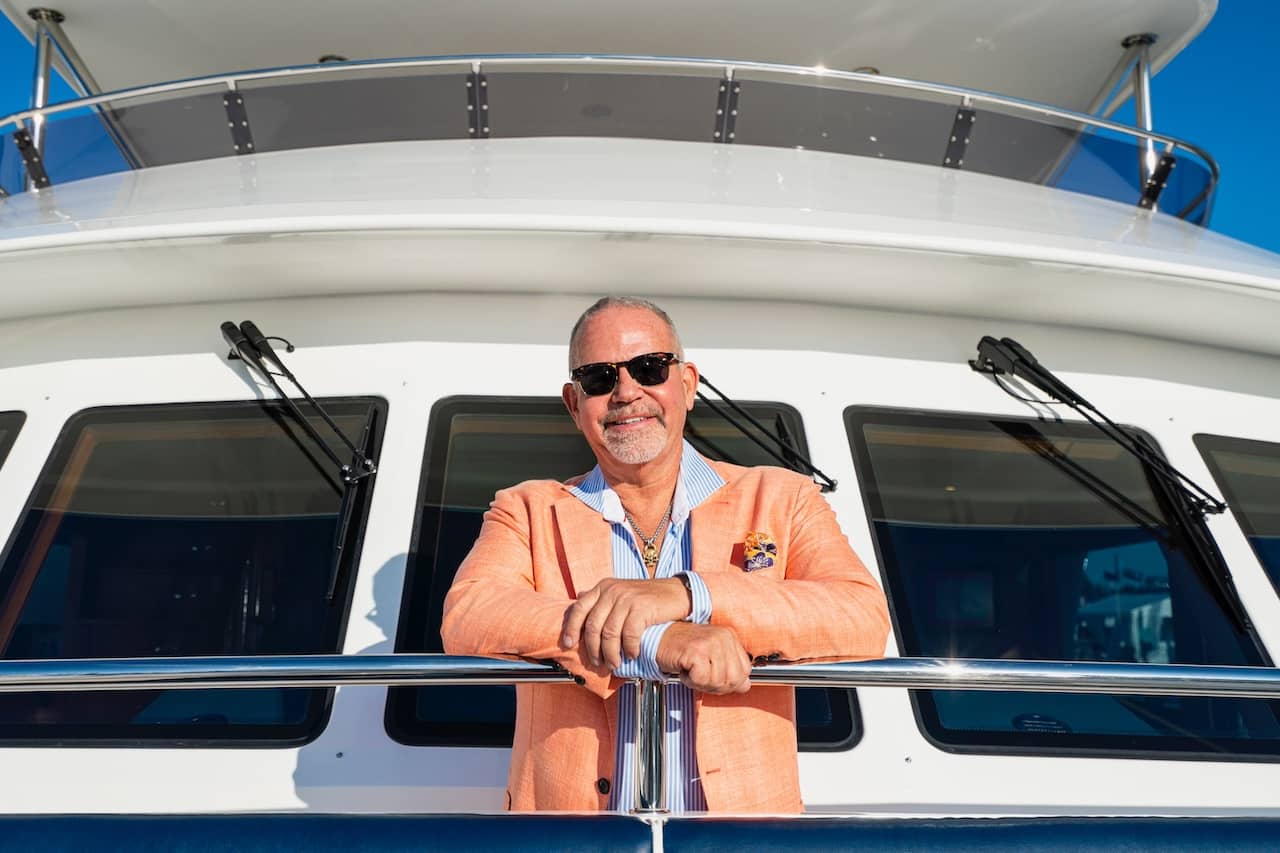
Jeff Druek.
John Burnham: What's happening this year in the trawler market for new and used boats, and how is Outer Reef moving with the market?
Jeff Druek: First off, we do not like to call them trawlers because that's an outdated term. We are not building your grandfather’s trawler that looks like a teak tree. We consider ourselves long-range motor yacht builders with a more contemporary take on a classic design. We never use the word trawler, ever.
On the new boat side, we have been very busy with a full order book. I think people yearn for a traditional look but with contemporary features, which is what we provide. As to the used long-range model side of the equation, considering our order book is out to almost three years, it makes a pre-owned Outer Reef a desirable choice without the wait. At Outer Reef, we retain 98% of all our resales, which helps us control our brokerage market of Outer Reef yachts. This is a direct correlation to the ownership experience of new boat owners and how they were treated.
Burnham: How do people get into the long-range cruiser market?
Druek: It’s definitely a step-up, aspirational market. If our owners are new to it, they are not going out and spending $8 million on their first boat. They'll buy something for under a million or $1.5 million and see how the lifestyle works for them. Then it's usually a move up…so I don't poo-poo that market at all. They’re our future buyers.
Burnham: At what size do they need a captain?
Druek: We have clients that run their own boats at 90 feet and might have a crew just for line handling, maintenance, and things of that nature, but the typical owner operator maximum is about 70 feet. That’s our sweet spot. It’s more of a maintenance thing; when you get up to 80 to 90 feet, it’s a lot of boat to wash and wax. And somebody who can afford an $8 million boat can afford a crew member living in the crew quarters. That's also one reason our crew quarters are so well appointed and spacious. We understand the value of attaining crew and keeping crew. And for owners who don’t have crew, it’s equal quality as the rest of the boat to be an extra stateroom for guests. All of our boats have internal staircases to the crew quarters so there’s no need to run out to the swim platform or climb down a hatch.
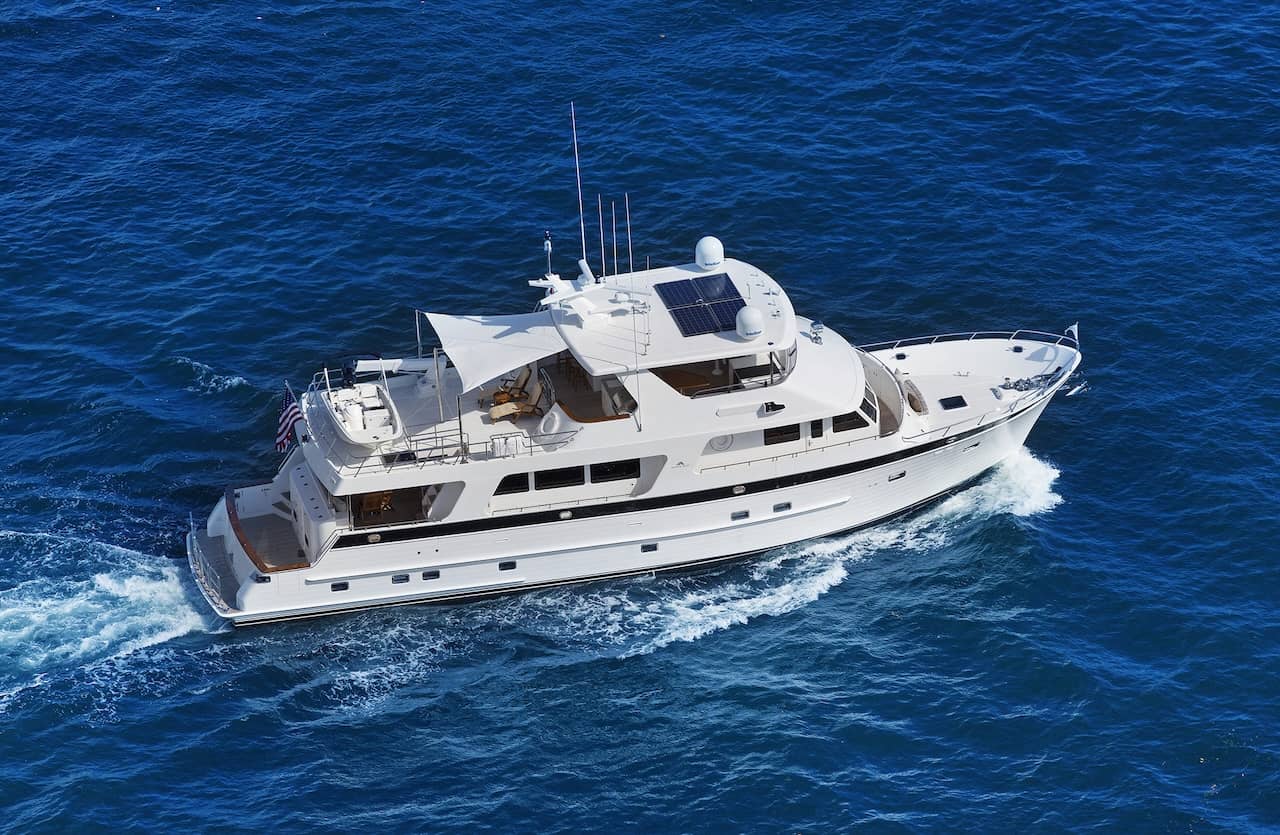
Outer Reef 820 Cockpit Motoryacht. All photos by Outer Reef.
Burnham: Do you have a less expensive tier of cruisers among your competitors?
Druek: We’re one of the few with a factory-direct business model. Other builders have dealers, and they're buying their product at the same price I buy my product from my factory, but they are a middleman, so typically we will be 15 to 20% less expensive. Others build in China and start with a less expensively built boat but then have a 25% tariff loaded into the price. My business model was never to have a dealer network, and it has been our competitive edge over the years.
It also helps that we keep our overhead low and have no debt on the books. Anybody who borrows to build new molds and tooling has to amortize that into the cost of the new boats. I don't like borrowing money—if I can't do it internally or in house, we don't do it.
Burnham: Your background is commercial fishing. How did that lead to building million-dollar yachts?
Druek: I was a commercial fisherman starting at the age 13. I finished high school, but never went to college because I had the bug bite of making money. My career as a commercial fisherman lasted until I was 25, and I also did a short stint in the merchant marines to get away from the inclement weather in the northeast when the bays were frozen solid, and we had to drive our trucks out on the ice and cut holes to fish.
I got into home building in the late ‘70s, early ‘80s when the red tide started hitting the bays. I saw the handwriting on the wall and started a carpentry business framing homes. I grew that business within about a year and a half to about 125 employees and became the largest framing contractor on Long Island. Through that, I branched out into custom home building, property management, and real estate development, which all fit together. I garnered a lot of knowledge about physically putting things together and working with my hands.
I had always been into boats and was enamored by the cruising lifestyle so I reached out to a company, that would eventually become one of my competitors, about building me a boat, and they were much like Henry Ford: “You can have any color you want as long as it's black.” I thought about that over a weekend and it just rubbed me the wrong way that I was building million dollar homes for people and customizing them whatever way they wanted, and now I was going to spend $1.2 million with no customization at all. I was supposed to go back to the dealer on Monday to sign the contract, but by Wednesday I was in Taiwan looking for a shipyard to build a boat. That was the beginning of Outer Reef Yachts.
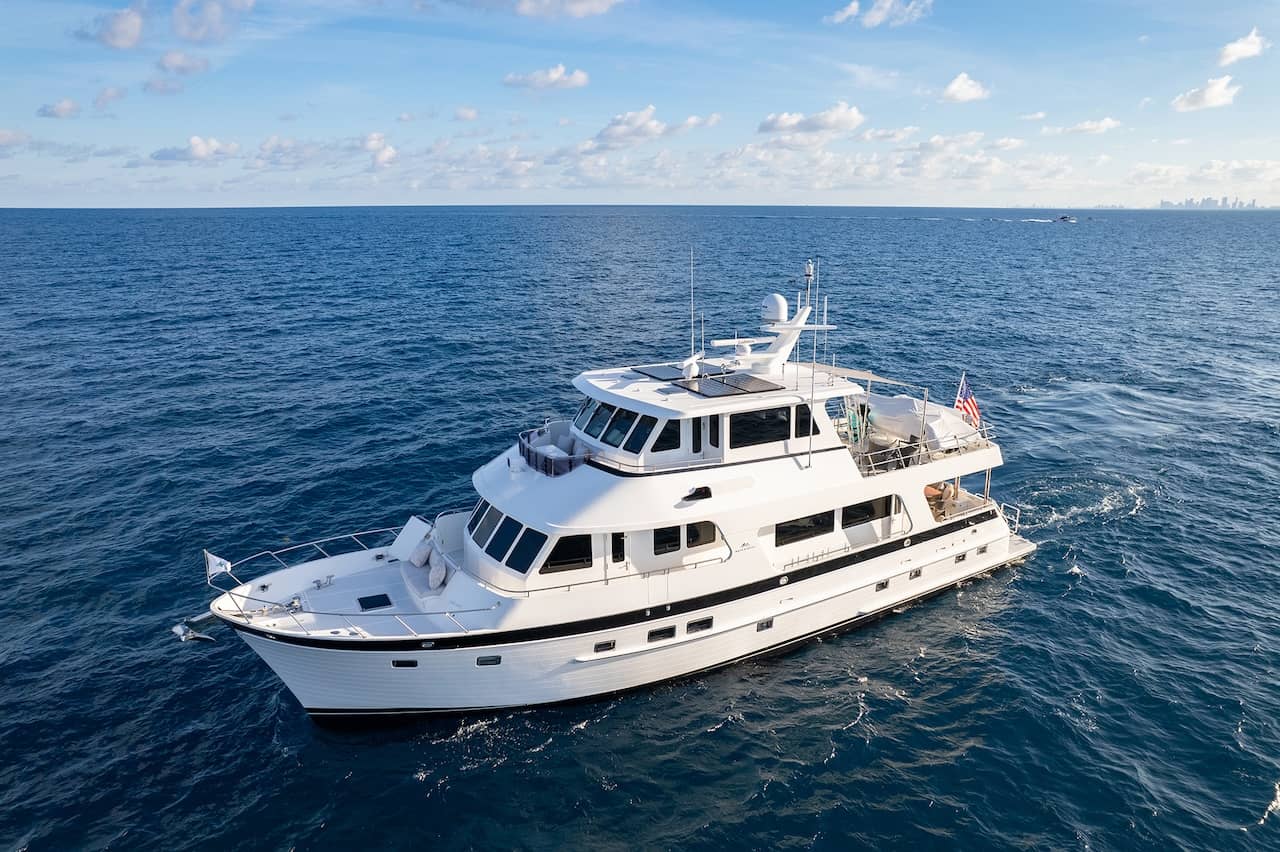
Outer Reef 740 Deluxbridge Motoryacht.
Burnham: Was there a steep learning curve?
Druek: One thing I learned in the boat business versus the home-building business is in the building business you make $1,000 mistakes and in the boat business you make million-dollar mistakes. I learned quickly where to focus my energy! But it went well and I’m still all in, loving what I do. I can't ever picture retiring. I love our clients. Boaters in general are cut from the same cloth, and it's been fun. In my building business, you would build a $5 million home for a person, and they would never invite you back unless it was a warranty issue. In boating, I'm friends with people we built boats for 25 years ago.
Burnham: What are the key questions you ask buyers up front?
Druek: One of the first questions I ask in a design session is how they intend to use their boat. Putting aside the seaworthiness of the vessel, which does not change based on need and specification, it's more about how someone lives. Are they big on entertaining or is it a couple with a few family members? We design the boat around the client's lifestyle and most of all their storage requirements. Some clients dine formally with guests so they need formal China storage; others are more utilitarian, and we will build specific storage spaces for bulk storage.
Burnham: What do you recommend for anchoring?
Druek: We just did a survey of customers on Facebook, and they prefer anchoring out to docking at a marina by about 80 to 20, so one of the big choices is ground tackle. Most start a design session with us by planning a dual-anchor setup and by time we're done, they’re back to one anchor—the Ultra anchor, one of the best pieces of mooring equipment I've ever seen. It makes the idea of having a Bruce and a plow anchor on the bow, for different bottom conditions, sort of passé now.
Sometimes we'll spend half a day talking about anchoring and anchors. Typically anchoring in the Bahamas, you’re in 15 feet of water, but how much more rode will you need elsewhere? If you get up to the Pacific Northwest, you'll be anchoring in 100 to 125 feet of water, and you’ll need 600 feet of chain. We usually recommend designing the boat for a lifetime of boating—maybe on the East Coast for a couple years, then the West Coast, and then maybe putting your boat on a ship and going to Europe.
What comes into these conversations also is resale values. A lot of customers may say, “I’m going to cruise for five years.” But you don't want to limit resale possibilities because the boat is not equipped well. On a boat that's equipped for only one area, you may be narrowing your resale opportunities.

The Outer Reef 650, an early model still available on the brokerage market.
Burnham: Why do people buy your boats used?
Druek: New or used typically depends less on budget than on the client’s time frame. Time is money, and an older client may have a narrower window to use the boat, so waiting for a new boat doesn’t work. They want a boat within six to eight months, and a brokerage boat is the only way to get that.
Other clients have a long-term plan including time for the build process, which is one of the most enjoyable parts for the client, plus our buyers are getting younger and may have time for the new-build process. When I started the business, the average buyer’s age was probably 65 to 70 years of age. Our average is now in the low 50s.
Burnham: How are prices trending today?
Druek: They are going up an average of 6 to 7% a year, because of the cost of goods and labor due to inflation. Both new and brokerage boats are going up—there’s a direct correlation.
Burnham: Does that contradict traditional advice not to think of a boat as an investment?
Druek: We don't really think of it as an investment. But it’s similar to the exotic car or plane markets. With long lead times on buying cars, people are buying positions. Our clients are not necessarily buying positions on new boats but deciding to have the option to upgrade to a new boat, thinking,” I might build it for myself, or I might flip the position.” By going to contract before the first of the year, a client might save as much as 6 percent on a coming price increase and save close to half a million dollars. Considering future price increases before the boat is actually built, the client could save much more or flip his position and make money on his deposit.
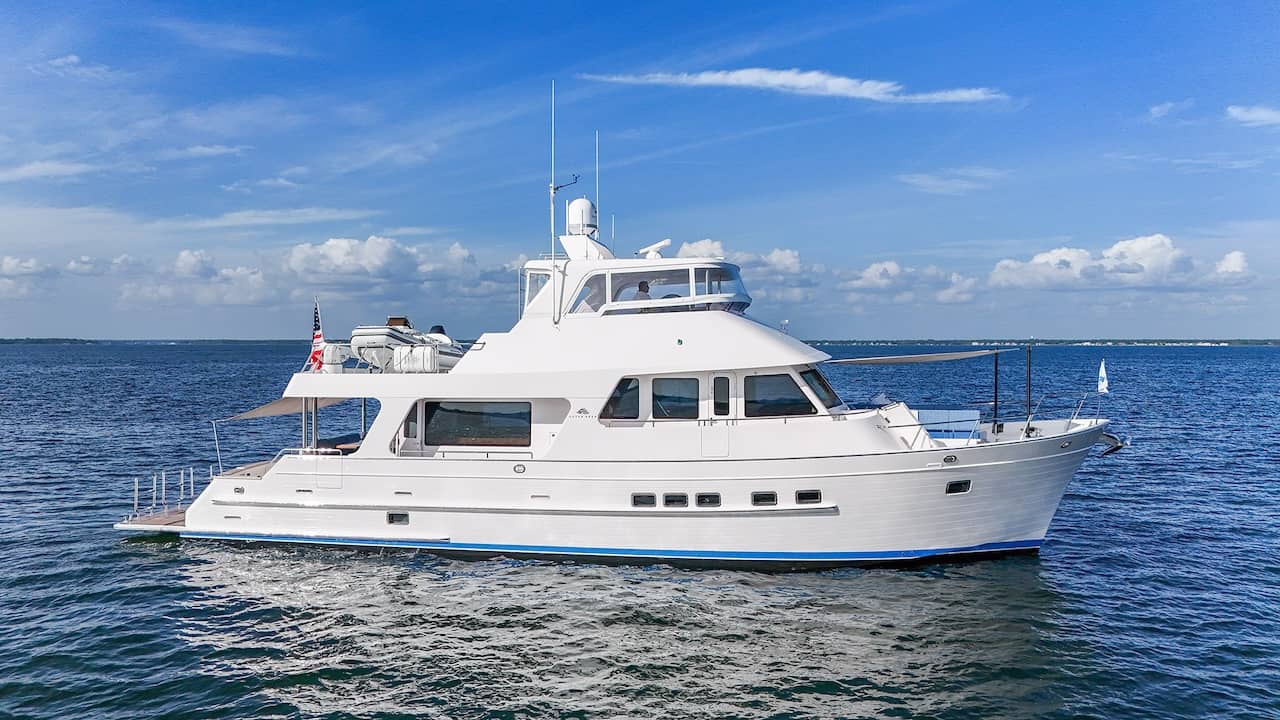
Outer Reef 670 Azure Sport Yacht.
Burnham: When a buyer steps up to a larger boat, what more do they get from a larger vessel?
Druek: It's really about having more space. Outer Reef has the X, M and S series. The X series is the widest at 21’ beam, the M is 18’6”, and the S is 17’2”. We have three sets of molds and can build boats in the S mold from 58 to about 64 feet. The M series goes from about 64 feet up to 74 feet, and the X series, about 75 feet to 90 feet.
We just delivered a boat to a client who had had a 72 on the M series, with 18’6” beam and his new boat is an X SERIES 83, with 21’ beam. When he got on the 83, he couldn't believe it. He said, “This thing is monstrous. It feels like twice the boat because of the beam.”
Burnham: What difference does the beam make in terms of handling or stability or the motion of the boat?
Druek: Our boats have similar handling characteristics from our smallest boat, about 60 feet, right up to the 90. They all have similar handling characteristics although a 90 versus a 61 is definitely going to be somewhat different handling because of the LOA, which makes a big difference in a head sea. But the different beam dimensions don't make that much difference—all are inherently stable with our hard-chine design.

Outer Reef 700 Motoryacht.
Burnham: How do you build all the models in three sets of molds?
Druek: We start with the largest mold for each beam series when we originally build the tooling, and all our molds are open-ended at the stern. We dam up the mold to make the smaller versions, say, a 75 with tooling that goes out to 90 feet. We never extend a boat—that’s poor building technique. Everything has to be monolithic in hull lamination.
Burnham: Do you see Outer Reef boats changing in the next five years?
Druek: The classic series remains the same. That’s our bread and butter, and its classic lines are timeless. I don't see that changing other than improvements in equipment, different interiors, etc.
We have three other series all in different stages of development. One of them is being built—our Trident series, which we call the 620 Evo for evolution. It was a pod drive when we first designed it nine years ago, but pods have gone out of fashion. At the Palm Beach boat show in March, we'll have the first Trident 62 with a conventional shaft and a whole new drive system put together by Volvo Penta.
We also have a 43-meter vessel that's designed and waiting for the right time, and we just finished designing a new 24-meter project that’s more Euro-style. I am finalizing plans with two shipyards now for these projects.
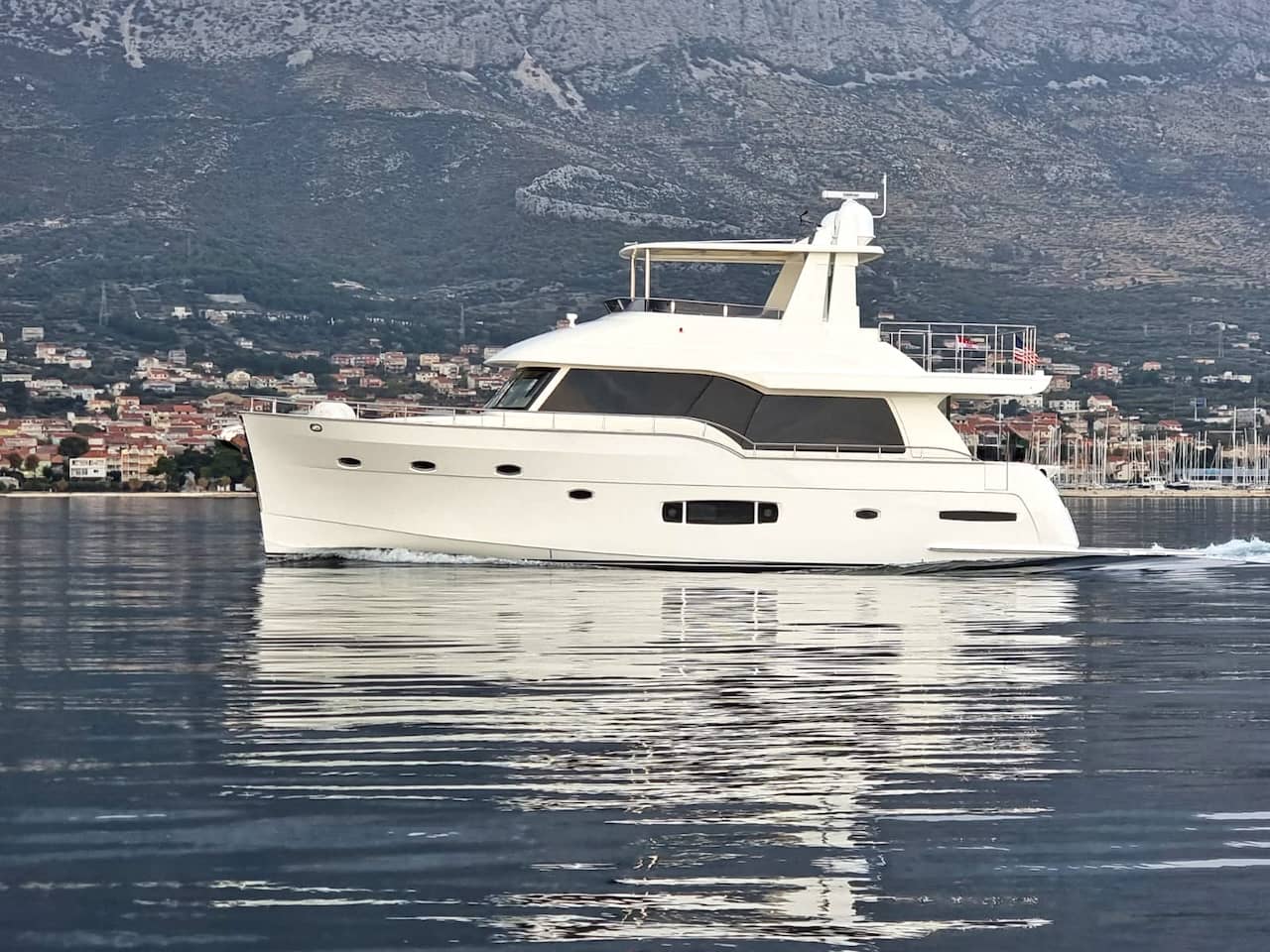
The Trident 62 Evo, reintroduced in 2024 with a conventional shaft drive.
Burnham: You've said that the market is getting younger? What else do you see among consumers—what are they looking for?
Druek: Sometimes I don't know what consumers are looking for. You look at some of the popular designs coming off the drawing boards of some European designers and builders, even American designers, and then you take the same boats out in a two-foot chop and their teeth are rattling and the boats are banging and bumping, squeaking and creaking.
That's not what we do. Whatever we do, it's robust. This is a non-compromise must for anyone looking to cruise long range. You are far afield and alone hundreds of miles offshore, and you want a well-founded vessel under you.
A previous client of ours owned a different brand boat and was crossing the Gulf Stream. It was so rough they had to go super slow because the boat was shaking apart. That could’ve been the end of their boating experience, but the husband was tenacious and said, “Let's get something seaworthy.” We ended up building them an 86 Cockpit and now they love boating again. When people look at a boat, I don’t know if they think about cruising it, or just looking good sitting in a marina. If that’s what they want, that's not our demographic.
Related Articles and Guides
24th Jul 2024
Rightboat Interview: Buying & Selling Cruising Yachts with Sue Grant of Berthon ...
10th Jun 2024
Rightboat Interview: From Style to Construction, Talking Center Consoles and Sco...
22nd May 2024
Rightboat Interview: Talking Runabouts, Center Consoles, and Catamarans with Nic...
1st May 2024



